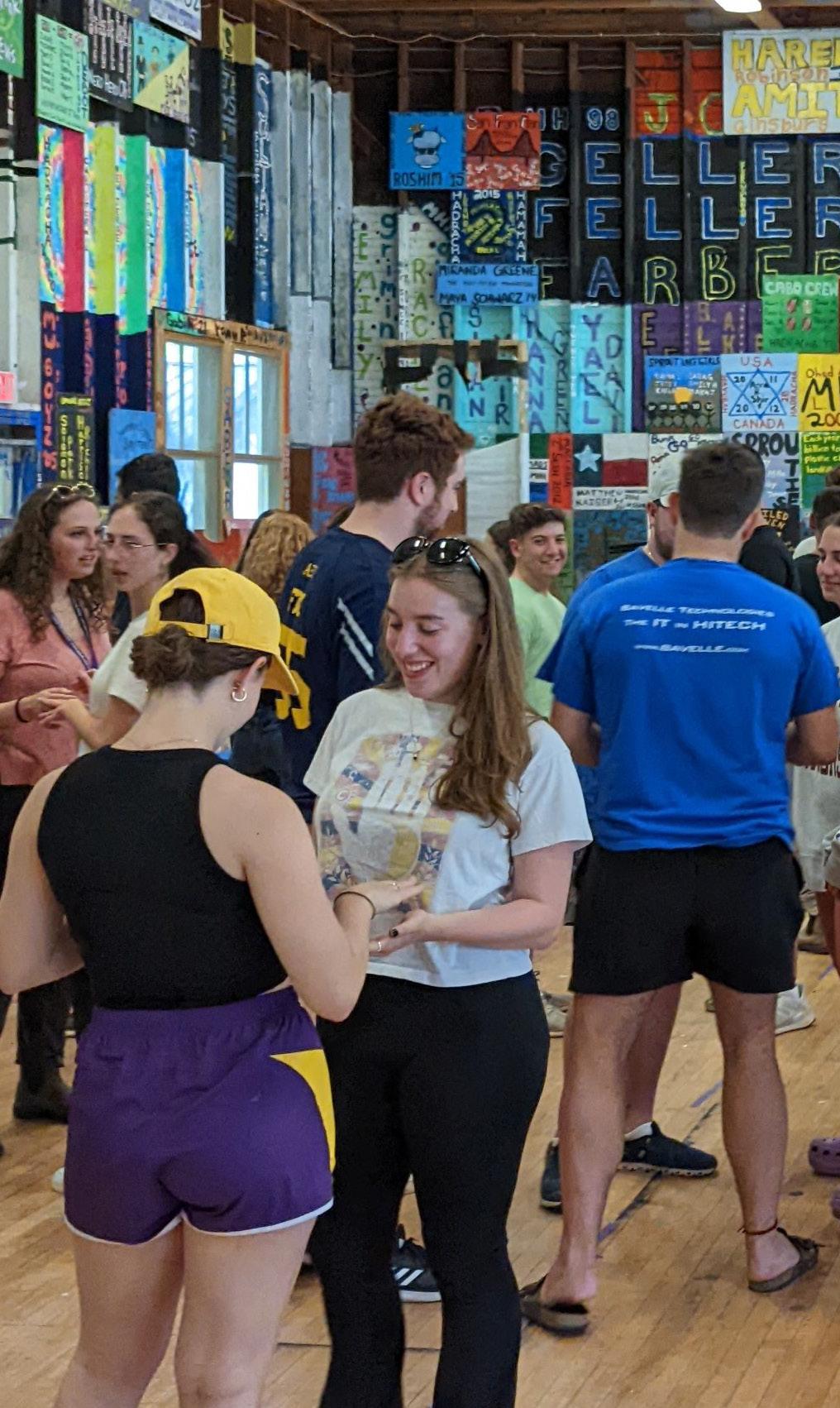
3 minute read
Goal 2
GOAL 2: BUILD AN ECOSYSTEM OF TEEN SUPPORT
STRENGTHEN THE ECOSYSTEM OF SUPPORT FOR JEWISH YOUTH BY PROVIDING EDUCATION AND TRAINING FOR THOSE WITH THE MOST IMPACT ON TEENS’ LIVES: PARENTS (AND OTHER CLOSE FAMILY MEMBERS), TEACHERS, COMMUNAL LEADERS, CLERGY, AND STAFF OF YOUTH-SERVING ORGANIZATIONS.
Advertisement
We will offer more educational opportunities for parents and family members and more professional development and training for educators and staff who work with youth. We will amplify the voices of teen leaders in our programs as well as those of our own staff and partners, to share insights and thought leadership about the critical connections between individual wellbeing, healthy relationships and communities, and systemic justice and equity – ideas that we hope will contribute significantly to the health of Jewish youth, families, communities and of our larger society.


GOAL 2 METHODS:
AUDIENCE: PARENTS, GRANDPARENTS AND OTHER FAMILY MEMBERS OF PRETEENS AND TEENS

OBJECTIVES
Support Jewish parents in parenting their preteens and teens through Raising Up Teens webinar series featuring a wide range of experts and teens and related resources Develop complementary parent and grandparent sessions and workshops for Moving Traditions programs to enable parents to learn key skills and approaches for supporting their teens. Create and distribute new content directly to parents to be used at home with their Jewish preteens and teens to support families in the transition to adolescence through engaging and accessible Jewish and SEL based wisdom . KEY METRICS OF SUCCESS
Double the number of parents, grandparents and other adults who mentor teens to 10,000 who engage with Moving Traditions learning opportunities. Ensure that at least 80% of family members who attend a Moving Traditions program feel that participating in a Jewish learning community has supported them in their roles. By 2026, release new book and/or electronic resource for parents to use in a self-directed way with their B-Mitzvah age children.
AUDIENCE: YOUTH EDUCATORS, CLERGY AND COMMUNAL LEADERS IN JEWISH YOUTH-SERVING ORGANIZATIONS
OBJECTIVES
Expand professional development and experiential educational training opportunities through our CultureShift initiative for educators, institutional leaders, and other professionals who either deliver Moving Traditions programs or play a key role in influencing the lives of Jewish youth. Create a scalable training to serve other youth-serving organizations that addresses key areas of healthy culture that are under-addressed in the field: teen wellbeing from a Jewish perspective; support for teen development of healthy, equitable and just relationships and communal norms; support for integrating an expansive and inclusive understanding of gender into Jewish educational and communal institutions and culture. KEY METRICS OF SUCCESS
By 2025, we will be engaging 200 educators a year who run Moving Traditions programs through training and continuing education. We will also have doubled the number of educators and professionals engaged through CultureShift by 2025 to impact at least 1,000 youth serving professionals and volunteers per year. By 2025, develop 2-4 new multi-year partnerships with national youth-serving organizations to maximize our impact on Jewish youth and those who serve them across geographical, institutional and denominational lines.
AUDIENCE: WIDER JEWISH COMMUNITY
OBJECTIVES
We will strengthen our communications and storytelling capacity, output, and impact. We will use our organization voice and brand to advance a field-wide understanding of the connections between individual wellness, healthy relationships and communities, and systemic justice and equity. We will develop new language, tools and training to help stakeholders clearly articulate the impact and relevance of our work. KEY METRICS OF SUCCESS

By January 2023, launch a redesigned website that is easier to navigate, with a goal of doubling our annual visitors to 100,000 by the 2025 programmatic year. Through targeted communications and engagement strategies for each segmented audience, maintain email open rates that exceed industry standard, increase click rates to industry standard by the 2025 programmatic year. By the 2025 programmatic year, train 100% of board members, staff, and teen fellows to clearly articulate the impact and relevance of our work.
27 By the 2025 programmatic year, establish thought leadership by publishing 10 thought pieces per year by staff, Board members, alumni, and teen fellows; and speaking at 25% more conferences and events within the Jewish community.









